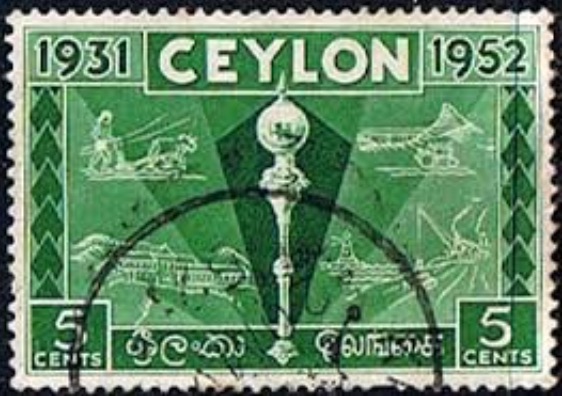A Brief Colonial History Of Ceylon(SriLanka)
Sri Lanka: One Island Two Nations
A Brief Colonial History Of Ceylon(SriLanka)
Sri Lanka: One Island Two Nations
(Full Story)
Search This Blog
Back to 500BC.
==========================
Thiranjala Weerasinghe sj.- One Island Two Nations
?????????????????????????????????????????????????Friday, July 21, 2017
Occasional Stories: Early Impressions Of The Left
 Fortunately,
or unfortunately, I had a very early inclination for left wing or red
politics by fate or circumstances. My father was an apolitical person
who used to say that he would vote for the ‘good candidate,’ no matter
what the political party is. I remember him saying this during the 1952
elections. I was only seven years at that time.
Fortunately,
or unfortunately, I had a very early inclination for left wing or red
politics by fate or circumstances. My father was an apolitical person
who used to say that he would vote for the ‘good candidate,’ no matter
what the political party is. I remember him saying this during the 1952
elections. I was only seven years at that time.
On
urban council elections, he voted for Watson Fernando (not a relation!)
who contested from the Communist Party. That time I didn’t know who
contested from what party. I came to know the details later. But what I
remember very clearly was an incident related to a ‘confrontation’
between the Reds and the Greens.
The Elephant with the Moving Trunk
Our
house was near the St. Peter’s Lane from the main road leading to
Korelawella. In between was only the Church. I think this happened on
the election-day itself. In the morning, I could suddenly see very
colourful decorations along the lane, small flags tied to cords (lanu)
laid across the road. Most of them were red flags and in between there
were green flags as well. Those days election decorations were not
prohibited. I was eagerly watching them fascinated by the colours and
swaying flags in the wind.
Towards
noon time, I heard a vehicle, decorated colourfully, entered the lane
from the main road with a loudspeaker playing music and occasional
announcements. The vehicle, a Morris Minor with an open roof, was full
of green. It had a mounted green elephant on top. Most peculiar was its
trunk; it was movable up or down.
When
the vehicle came across red flags, the elephant mounted its trunk and
destroyed them. The green flags were spared, the elephant lowering its
trunk to avoid them. In few minutes, all the red flags were gone and
only the greens remained.
I was annoyed against the Green and the Elephant, the symbols of conservative politics at that time.
1953 Hartal
The next year was the Hartal.
It was a major general strike and/or people’s uprising against the
government. I was eight years of age. I remember a major demonstration
parading on the main road few days before the event. There were hundreds
of people marching, but that appeared to me thousands. I ran to the
gate and watched it. It was impressive and colourful. There was some
force and courage in it which I liked.
Most
impressive was David taking a leading role in the demonstration. He was
almost at the front, on a bicycle, wearing a red shirt, a white sarong
and most impressively a red cap. I was excited. He even had a large red
flag mounted on a pole and tied to his bicycle. The flag embraced his
face and he was even shouting something.
We used to call him Hadigama David after our father. Hadigama was his home village in Piliyandala, about ten miles from our home. Hadi-gama literally
meant ‘brawny-village.’ Hadigama or Piliyandala symbolized the rural to
us those days with paddy fields and most importantly several types of
monkeys. Ours was urban with no monkeys or paddy fields. David was
working at the Velona Vocational School as a carpenter or carpentry
instructor. Perhaps my father was responsible for putting him into that
job. My father was working at the Labour Department. David used to come
to our place and do all carpentry work but didn’t take much money other
than some gifts from my mother.
I
used to admire this man because he was tall, strong and talked in a
brave voice. He was a ‘knowledgeable man’ on many matters (to me) but
when he was telling us stories my father used to smile and move away for
some reason. He cannot be fighting for the wrong cause, I thought after
the demonstration. Therefore, I was in support of Hartal in 1953 when I was eight years.
There were other events. I think it was the day before the Hartal,
the army also had a parade on our road. They were marching towards
Korelawella. It was different. It was just a march with no guns but
small sticks in hand of every soldier. They were about fifty. They did
not impress me, except their uniforms and boots. But what was the
purpose of the march? I came to know the purpose only later. Korelawella
area, popularly called ‘Little Korea’ because of continuous ‘troubles,’
was supposed to be a hot bed of Hartal and left-wing activities. That was the meaning of the army march – to give a clear warning.
Eating My Banis


